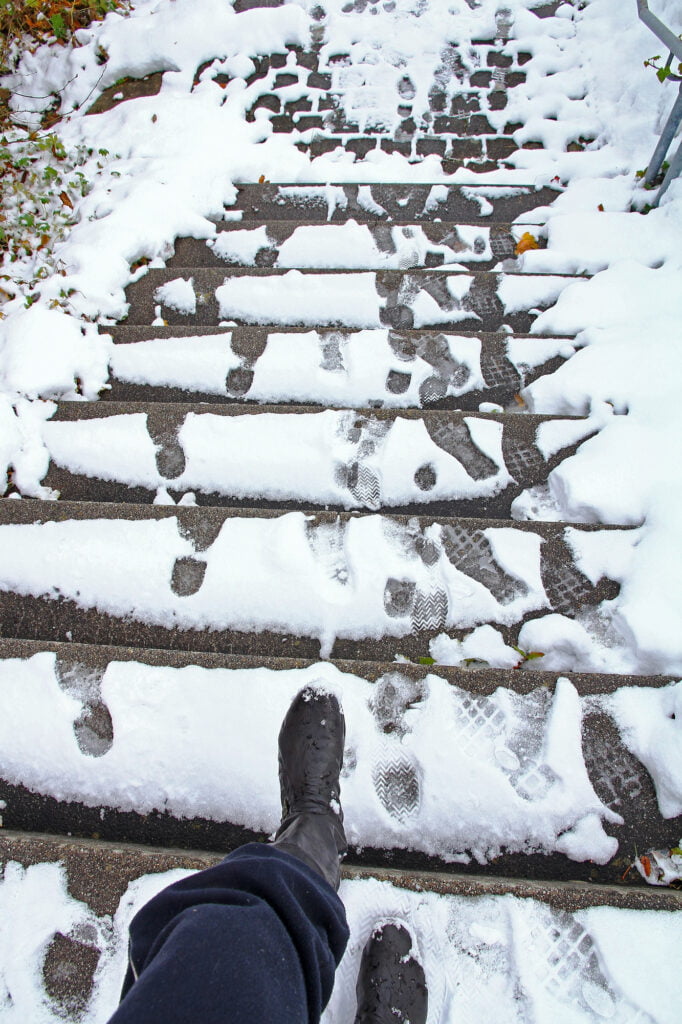The warmer winter weather is great; however, when it comes to the milder temperatures around zero degrees, icy walkways can become a huge concern.
We are all at risk of falling, but this is especially so for older adults. Falls can cause serious injuries that could affect your quality of life now and in the future.
According to recent studies, falls are the leading cause of disability and death among the elderly population. It is also said that those who fall and are not harmed still suffer negative consequences of this fall. Anxiety and depression due to social isolation and the fear of falling are examples of this. This decrease in physical activity will lead to deconditioning and poor overall strength, especially of the lower extremities, resulting in poor balance. This then makes this population even more at risk of falls.
Fall Prevention Is Key!
Balance and lower body strength are the reasons that younger people can prevent their slips from turning into a fall. Reaction time and vision are a close second but not as important as physical abilities.
This is where Physiotherapy and Athletic Therapy help!
Our goal as healthcare providers is to optimize physical function, well-being, and mobility.
The following are our steps to assist with FALL PREVENTION:
1. Assess Fall Risk:
Our first step is to evaluate an older adult’s physical condition, mobility, balance and strength to target specific risk areas. We would then focus on correcting muscle imbalances (leg length discrepancies, strength, and flexibility), posture, gait (walking pattern), balance and coordination.
2. Strength Training:
Strength training is a critical aspect of fall prevention. It’s crucial to strengthen the muscles that support ideal posture, lower extremity alignment, and balance. Core strength, exercises to optimize bone density, and increasing joint and muscle flexibility would be our target for fall prevention.
3. Balance & Coordination:
Balance and coordination exercises are essential to a fall prevention exercise program. Examples of these exercises would be balancing on one leg, heel-to-toe walking, and reaching exercises to improve proprioception (knowing where your body is in space). This work will then increase reaction time and reduce sway during gait, thus improving balance and confidence in walking.
4. Assistive Equipment:
We can determine when a gait aid or assistive device would be beneficial, like a 2 or 4-wheeled walker, cane, walking poles, orthotics, or adjustments to footwear like a heel lift, etc. These aids help enhance mobility and offer the support needed to prevent falls. At the same time, they offer a greater sense of security and functional ability for daily living activities.
5. Education:
Education on the risk of falls and how to prevent them is also essential. It is always important to include the extended family in this education as well. Education provides ways to protect the elderly from falling, correcting environmental hazards like getting rid of throw rugs in the home, adding a rail to the entranceway, and incorporating additional lifestyle changes to minimize fall risk.
Physiotherapists and Athletic Therapists are your coaches to optimize fall prevention.
Come see us today for your personalized fall prevention exercise and education program.
“Take care of your body, and it will take care of you!”—F4L

